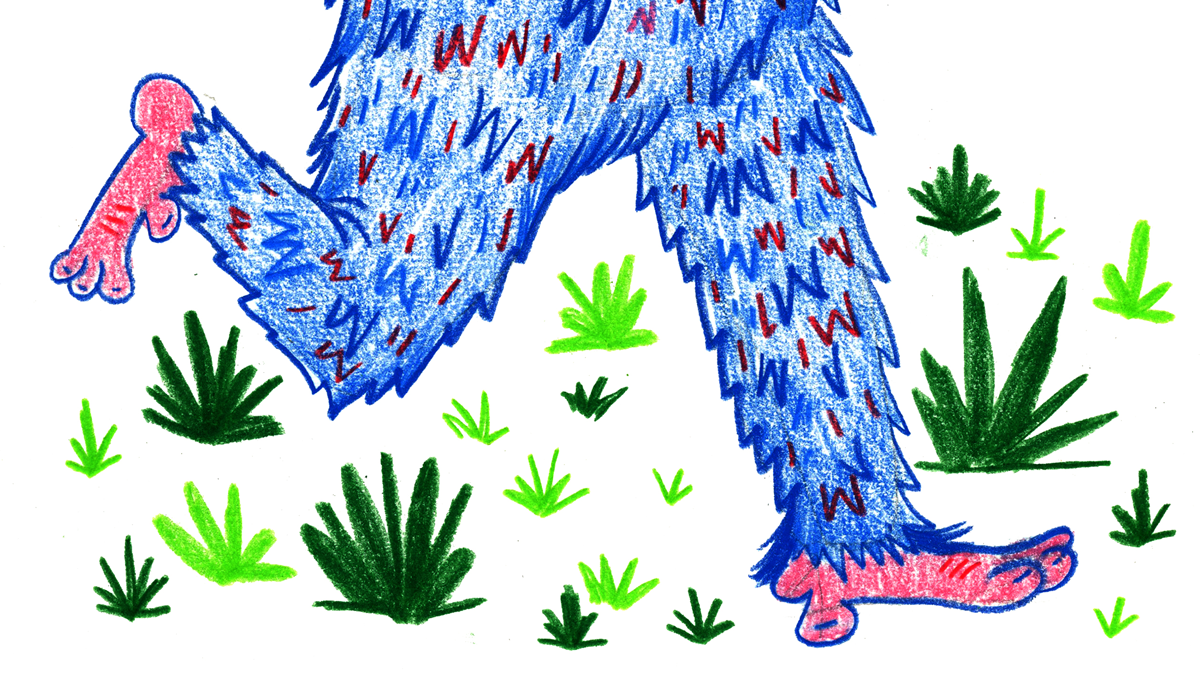Robert Michael Pyle studies Bigfoot, ecology and butterflies—not necessarily in that order.
Pyle is one of the world's foremost experts in butterflies, having penned seven books about the insects, including the Audubon Society's Field Guide to North American Butterflies.
But he also dabbles in Sasquatching. His 1995 book, Where Bigfoot Walks, was just updated and reissued. He'll be reading from that book at Powell's in Beaverton next month.
But with the Bigfoot Festival happening this weekend in Troutdale, we caught up with Pyle to talk about Bigfoot.

His book, Where Bigfoot Walks, is more about wilderness than mythical forest monkey creatures. In it, we meet Sasquatch footprint faker Ray Wallace, Bob Gimlin—famous for filming the first possibly real footage of Bigfoot in the '60s—and Cliff Barackman, co-host of the TV series Finding Bigfoot. Barackman will appear at the Oregon Sasquatch Festival. Pyle writes of the Dark Divide, a stretch of land near Mount St. Helens where many Bigfoot sightings originate. The 70-year-old lepidopterist, with a doctorate from Yale, carries a butterfly net but no cell phone on his treks through Bigfoot country—meaning if he ever sees Bigfoot, we'll have to take his word for it.
"I don't travel with a device because I don't speak connectedness when I'm out there," he says.
The author is neither a true believer, nor a dedicated skeptic. He's more a Bigfoot agnostic.
"I am a biologist and I have not seen the animal, so how can I say I know or believe?" Pyle says. "So far, I don't have a better hypothesis than the existence of this animal. But it's also not definitive proof."
Why is Bigfoot so captivating?
Robert Michael Pyle: I think there is something in us that wants to think there might be something beyond the campfire that is somehow either threatening or intimidating or at least mysterious. The more like us the better. But not quite like us. We all seem to need giants. And yet the big difference to me with this one is that it might be an archetype that actually exists in the wild as well.
One of the major points and purposes of the book is to speak for wildness. If we manage to save a significant portion of the animal's presumed habitat, we will have saved one of the greatest green treasures on Earth. If we don't, if it becomes finally tamed outright, like so many other places, we will have lost not only the possibility of thinking there might be giant hairy apes out there, but we will have lost much more.
We've heard some weird theories—like that Bigfeet are aliens. Could Bigfoot have psychic abilities or come from another planet?
I don't differentiate between the spiritual and the physical very much. I find the individuating details of the physical world are endlessly exhilarating and uplifting to me. Some have called my writing spiritual. That's fine, I don't mind the word. But I don't seek a supernatural because I don't find the natural to be wanting.
It's an animal! If it exists, it's an animal that evolved and has an ecological niche like any other. To me, that's all that's required.
Do people really store bags of supposed Bigfoot poop in their fridge?
It's funny you should ask, because I was thinking about that just yesterday. There was a great big, I will not say "pile" of poop. If you grew up with the surname Pyle you wouldn't use "pile" either. There was a great big stack of feces on the ground, and I said "Oh, wow! Am I going to be one of these guys with a big bag of poop in my fridge?" And I am not. I concluded that it was probably bear. But it was in a place that I found a Bigfoot track, and who knows? Could I have had a heap of Bigfoot poop there in front of me? Maybe. But it's still there, it's not in my fridge.
GO: Oregon Bigfoot Festival, Glenn Otto Park, 1106 E Historic Columbia River Hwy., Troutdale. 9 am-5 pm. All ages. $5 suggested donation, $35 for Cliff Barackman conference and meet & greet.
Robert Michael Pyle is doing a reading and signing at Powell's at Cedar Hills Crossing on September 22, 3415 SW Cedar Hills Blvd., Beaverton.
